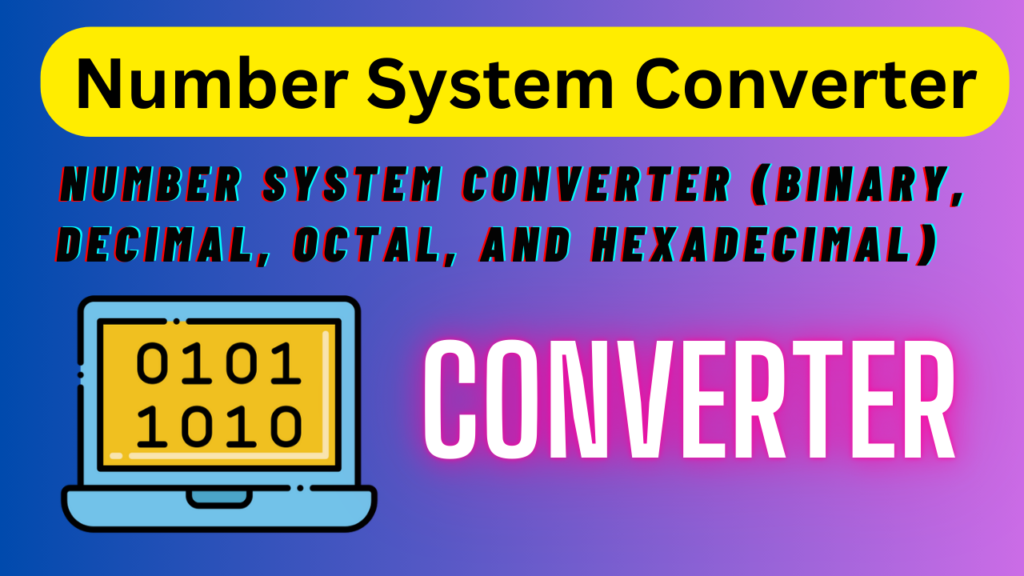ASCII to EBCDIC Converter
Customize ASCII to EBCDIC Mapping
| ASCII | EBCDIC (Hex) |
|---|
ASCII to EBCDIC Conversion Table
Table showing results of converting ASCII characters to EBCDIC.
| ASCII | EBCDIC | ASCII Meaning |
|---|---|---|
| 00 | 00 | NUL |
| 01 | 01 | SOH |
| 02 | 02 | STX |
| 03 | 03 | ETX |
| 04 | 1A | SEL |
| 05 | 09 | HT |
| 06 | 1A | RNL |
| 07 | 7F | DEL |
| 08 | 1A | GE |
| 09 | 1A | SPS |
| 0A | 1A | RPT |
| 0B | 0B | VT |
| 0C | 0C | FF |
| 0D | 0D | CR |
| 0E | 0E | SO |
| 0F | 0F | SI |
| 10 | 10 | DLE |
| 11 | 11 | DC1 |
| 12 | 12 | DC2 |
| 13 | 13 | DC3 |
| 14 | 3C | DC4 |
| 15 | 3D | NAK |
| 16 | 32 | SYN |
| 17 | 26 | ETB |
| 18 | 18 | CAN |
| 19 | 19 | EM |
| 1A | 3F | SUB |
| 1B | 27 | ESC |
| 1C | 1C | FS |
| 1D | 1D | GS |
| 1E | 1E | RS |
| 1F | 1F | US |
| 20 | 40 | (space) |
| 21 | 4F | ! |
| 22 | 7F | “ |
| 23 | 7B | # |
| 24 | 5B | $ |
| 25 | 6C | % |
| 26 | 50 | & |
| 27 | 7D | ‘ |
| 28 | 4D | ( |
| 29 | 5D | ) |
| 2A | 5C | * |
| 2B | 4E | + |
| 2C | 6B | , |
| 2D | 60 | – |
| 2E | 4B | . |
| 2F | 61 | / |
| 30 | F0 | 0 |
| 31 | F1 | 1 |
| 32 | F2 | 2 |
| 33 | F3 | 3 |
| 34 | F4 | 4 |
| 35 | F5 | 5 |
| 36 | F6 | 6 |
| 37 | F7 | 7 |
| 38 | F8 | 8 |
| 39 | F9 | 9 |
| 3A | 7A | : |
| 3B | 5E | ; |
| 3C | 4C | > |
| 3D | 7E | = |
| 3E | 6E | > |
| 3F | 6F | ? |
| 40 | 7C | @ |
| 41 | C1 | A |
| 42 | C2 | B |
| 43 | C3 | C |
| 44 | C4 | D |
| 45 | C5 | E |
| 46 | C6 | F |
| 47 | C7 | G |
| 48 | C8 | H |
| 49 | C9 | I |
| 4A | D1 | J |
| 4B | D2 | K |
| 4C | D3 | L |
| 4D | D4 | M |
| 4E | D5 | N |
| 4F | D6 | O |
| 50 | D7 | P |
| 51 | D8 | Q |
| 52 | D9 | R |
| 53 | E2 | S |
| 54 | E3 | T |
| 55 | E4 | U |
| 56 | E5 | V |
| 57 | E6 | W |
| 58 | E7 | X |
| 59 | E8 | Y |
| 5A | E9 | Z |
| 5B | 4A | [ |
| 5C | E0 | \ |
| 5D | 5A | ] |
| 5E | 5F | ^ |
| 5F | 6D | _ |
| 60 | 79 | ′ |
| 61 | 81 | a |
| 62 | 82 | b |
| 63 | 83 | c |
| 64 | 84 | d |
| 65 | 85 | e |
| 66 | 86 | f |
| 67 | 87 | g |
| 68 | 88 | h |
| 69 | 89 | i |
| 6A | 91 | j |
| 6B | 92 | k |
| 6C | 93 | l |
| 6D | 94 | m |
| 6E | 95 | n |
| 6F | 96 | o |
| 70 | 97 | p |
| 71 | 98 | q |
| 72 | 99 | r |
| 73 | A2 | s |
| 74 | A3 | t |
| 75 | A4 | u |
| 76 | A5 | v |
| 77 | A6 | w |
| 78 | A7 | x |
| 79 | A8 | y |
| 7A | A9 | z |
| 7B | C0 | { |
| 7C | 6A | ¦ |
| 7D | D0 | } |
| 7E | A1 | ~ |
| 7F | 07 | DEL |
| 80-FF | 3F |
In the world of data processing and legacy systems, encoding formats like ASCII and EBCDIC play a vital role in ensuring proper communication between systems. While ASCII is the default standard for modern computers, EBCDIC remains crucial in legacy systems, particularly those used in IBM mainframes. This guide dives into the concept of an ASCII to EBCDIC Converter, explaining its significance, usage, and the steps required to convert ASCII to EBCDIC.
Table of Contents
What is ASCII to EBCDIC Conversion?
ASCII (American Standard Code for Information Interchange) and EBCDIC (Extended Binary Coded Decimal Interchange Code) are character encoding systems used to represent text in computers. ASCII is a 7-bit encoding scheme that became the standard for modern computing systems. On the other hand, EBCDIC, an 8-bit encoding developed by IBM, is still used in mainframes and older computing systems.
Converting data from ASCII to EBCDIC ensures compatibility when transferring text between systems that rely on different encoding formats.
Why Use an ASCII to EBCDIC Converter?
Here are some scenarios where an ASCII to EBCDIC converter is essential:
- Data Integration: Companies working with mainframe systems often need to exchange data with modern systems.
- Legacy Systems: EBCDIC encoding is vital for ensuring compatibility with legacy databases and applications.
- Cross-Platform Compatibility: Translating text from ASCII to EBCDIC ensures seamless operations between systems using different encodings.
Using an ASCII EBCDIC converter online or offline tools can save time and reduce the risk of encoding errors.
How to Convert ASCII to EBCDIC?
An ASCII to EBCDIC Converter works by mapping each ASCII character to its corresponding EBCDIC value. Below is a comparison table of some commonly used ASCII characters and their EBCDIC equivalents.
| ASCII Character | ASCII Code (Hex) | EBCDIC Code (Hex) | EBCDIC Character |
|---|---|---|---|
| A | 0x41 | 0xC1 | A |
| B | 0x42 | 0xC2 | B |
| C | 0x43 | 0xC3 | C |
| 1 | 0x31 | 0xF1 | 1 |
| 2 | 0x32 | 0xF2 | 2 |
| Space | 0x20 | 0x40 | Space |
This table highlights how characters differ in ASCII and EBCDIC encoding, making conversion necessary in certain applications.
Features of a Good ASCII to EBCDIC Converter
When selecting an ASCII to EBCDIC conversion tool, ensure it has the following features:
- User-Friendly Interface: The tool should be simple to use, whether it’s an online ASCII to EBCDIC converter or a desktop application.
- Accurate Mapping: It should handle edge cases like special characters and control codes effectively.
- Batch Processing: For large data files, batch conversion is essential.
- Customization: Advanced tools allow users to edit or extend the mapping table for specific requirements.
How Does an Online ASCII to EBCDIC Converter Work?
An ASCII to EBCDIC converter online processes your input by reading ASCII characters and matching them to their respective EBCDIC codes. Here’s how it works:
- Input the ASCII text or hexadecimal values.
- The tool scans the input and translates each character using a predefined lookup table.
- The output is displayed in EBCDIC format, ready to be used in legacy systems.
Benefits of Converting ASCII to EBCDIC
- Preserve Data Integrity: Ensure data remains intact when transferring files between different platforms.
- System Compatibility: Facilitate smooth communication between modern and legacy systems.
- Speed and Efficiency: Tools like the EBCDIC ASCII tool make conversion quick and error-free.
Examples of ASCII to EBCDIC Code Conversion
Consider the text HELLO123. Here’s how it translates:
| Character | ASCII Code (Hex) | EBCDIC Code (Hex) |
|---|---|---|
| H | 0x48 | 0xC8 |
| E | 0x45 | 0xC5 |
| L | 0x4C | 0xD3 |
| O | 0x4F | 0xD6 |
| 1 | 0x31 | 0xF1 |
| 2 | 0x32 | 0xF2 |
| 3 | 0x33 | 0xF3 |
The resulting EBCDIC output would be: C8C5D3D6F1F2F3.
Top Tools for ASCII to EBCDIC Conversion
- ASCII to EBCDIC Converter Online: Web-based tools that allow quick and efficient conversion.
- Custom Scripts: Write scripts in Python, Java, or other programming languages using ASCII and EBCDIC mapping tables.
- Professional Software: Tools like IBM utilities offer robust solutions for large-scale EBCDIC encoding.
Common Use Cases for ASCII to EBCDIC Conversion
- Data Migration: Transferring databases from ASCII-based systems to IBM mainframes.
- File Transfers: Exchanging files between ASCII and EBCDIC systems without losing encoding consistency.
- Application Development: Building apps that need to communicate with mainframe environments.
Conclusion
Converting ASCII to EBCDIC is an essential task for organizations managing legacy systems. With the help of modern tools, both offline and online, this process has become easier and more efficient. Whether you’re a developer, system administrator, or a business dealing with mainframe data, mastering EBCDIC conversion can streamline your workflows.
If you’re looking for an easy-to-use ASCII EBCDIC converter online, plenty of options are available to get started today. From improving cross-platform compatibility to ensuring seamless data integration, the right converter can make all the difference in your workflow.
FAQs on ASCII to EBCDIC Conversion
1. What is EBCDIC Encoding?
EBCDIC is an 8-bit character encoding used primarily on IBM mainframes and other legacy systems.
2. Can I convert text to EBCDIC using a script?
Yes, many developers use scripts in languages like Python to handle EBCDIC conversion.
3. Is there a free online ASCII to EBCDIC tool?
Yes, several websites offer free ASCII to EBCDIC converters online.
4. What’s the difference between ASCII and EBCDIC?
ASCII uses a simpler 7-bit encoding scheme, while EBCDIC is 8-bit and is often more complex due to its character layout.


